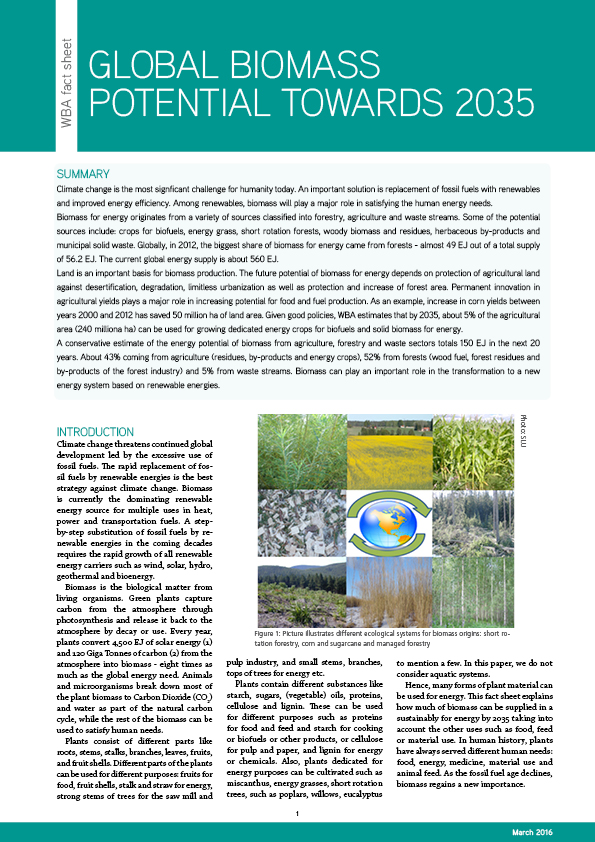Biomass Potential towards 2035
Back to Resources
Published:
2016-03
Summary
Climate change is the most signficant challenge for humanity today. An important solution is replacement of fossil fuels with renewables and improved energy efficiency. Among renewables, biomass will play a major role in satisfying the human energy needs.
Biomass for energy originates from a variety of sources classified into forestry, agriculture and waste streams. Some of the potential sources include: crops for biofuels, energy grass, short rotation forests, woody biomass and residues, herbaceous by-products and municipal solid waste. Globally, in 2012, the biggest share of biomass for energy came from forests – almost 49 EJ out of a total supply of 56.2 EJ. The current global energy supply is about 560 EJ.
Land is an important basis for biomass production. The future potential of biomass for energy depends on protection of agricultural land against desertification, degradation, limitless urbanization as well as protection and increase of forest area. Permanent innovation in agricultural yields plays a major role in increasing potential for food and fuel production. As an example, increase in corn yields between years 2000 and 2012 has saved 50 million ha of land area. Given good policies, WBA estimates that by 2035, about 5% of the agricultural area (240 milliona ha) can be used for growing dedicated energy crops for biofuels and solid biomass for energy.
A conservative estimate of the energy potential of biomass from agriculture, forestry and waste sectors totals 150 EJ in the next 20 years. About 43% coming from agriculture (residues, by-products and energy crops), 52% from forests (wood fuel, forest residues and by-products of the forest industry) and 5% from waste streams. Biomass can play an important role in the transformation to a new energy system based on renewable energies.

